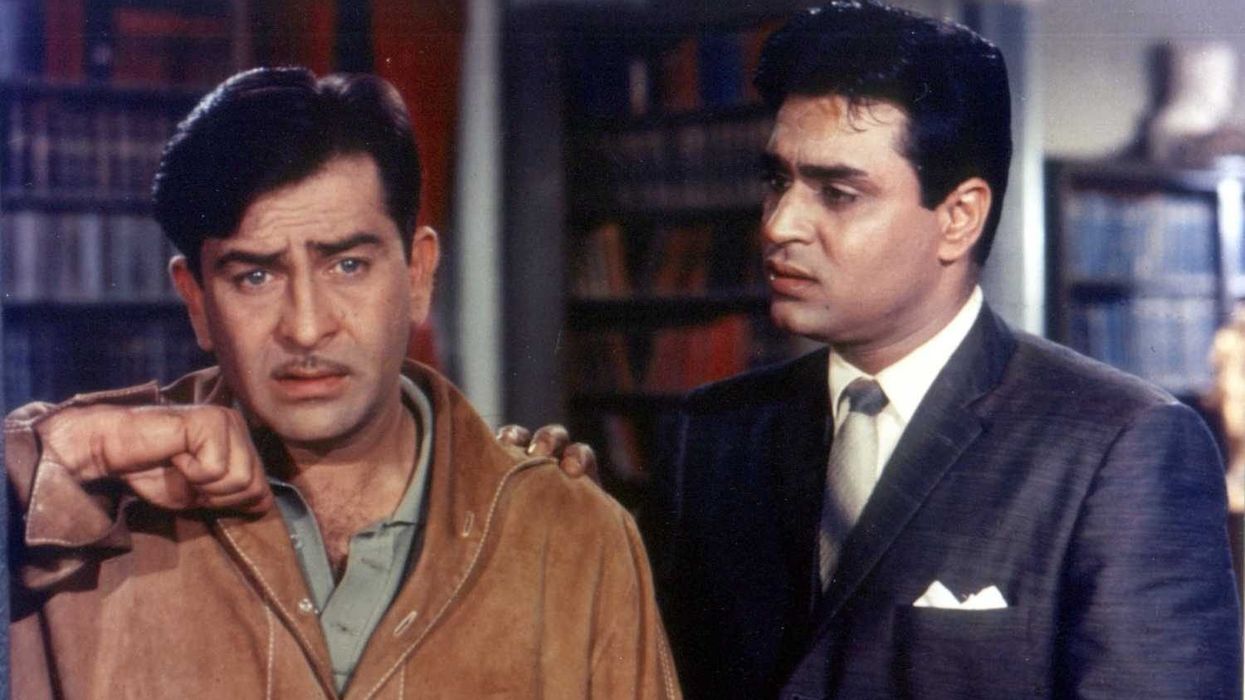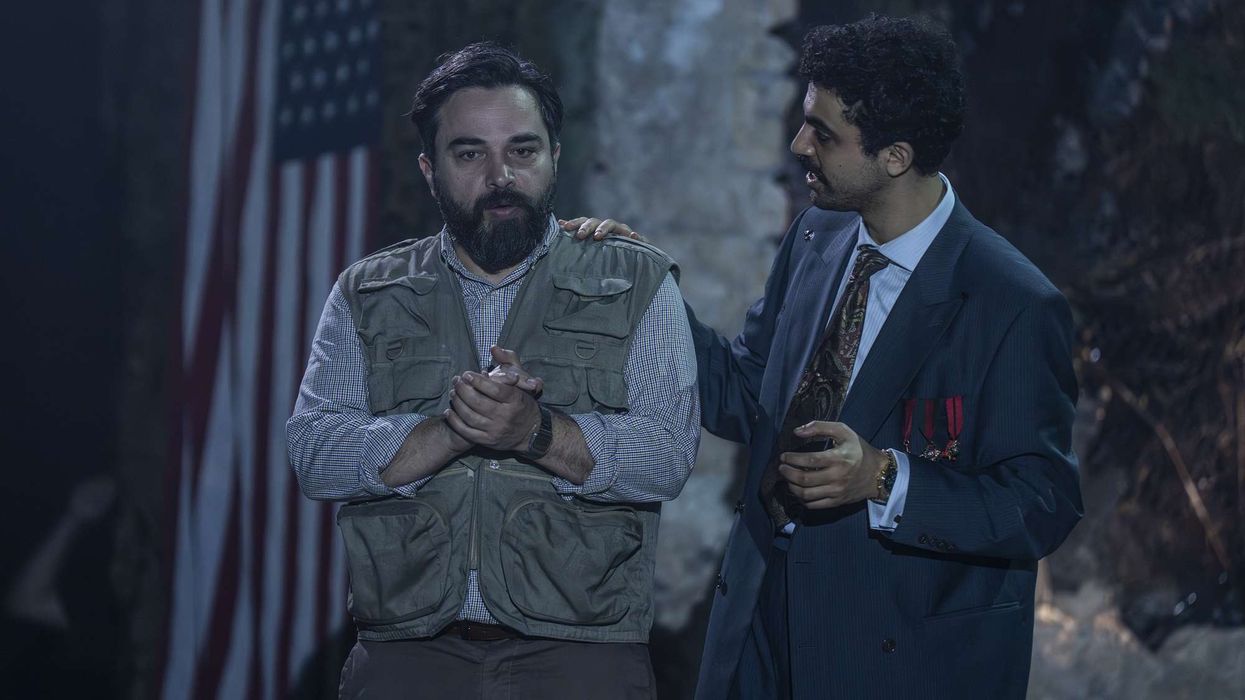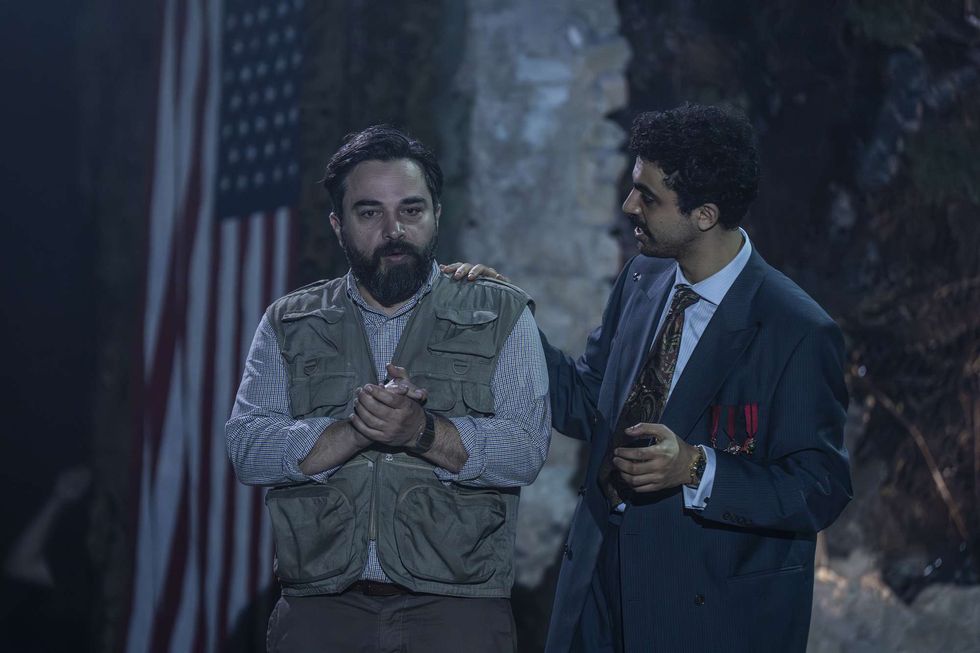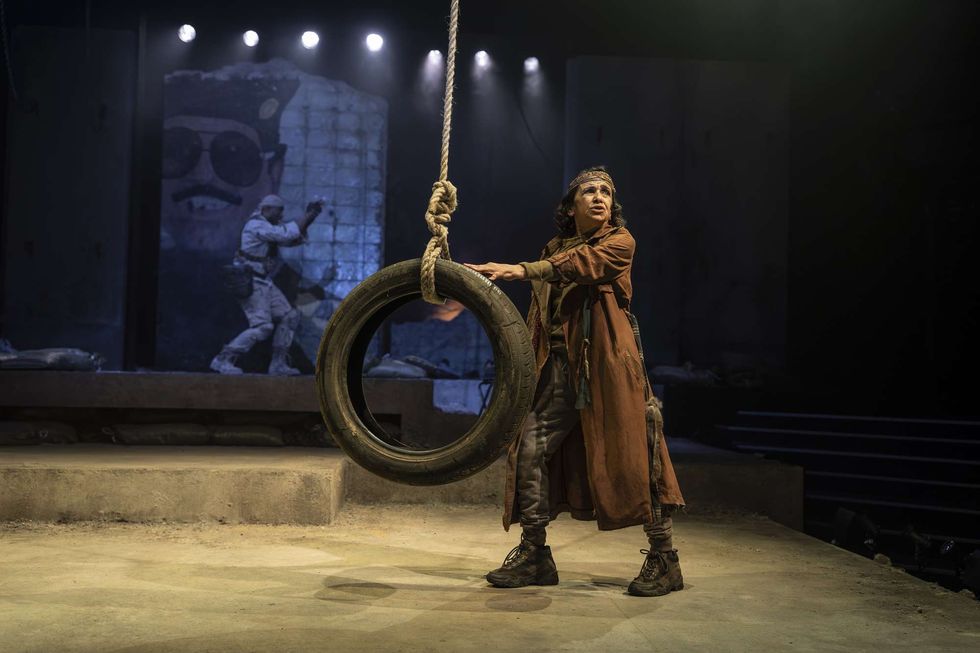When romantic drama Sangam was released on June 18, 1964, it became a huge blockbuster success. The love triangle, regularly listed as one of the greatest Bollywood movies ever made, had iconic moments, and influenced many filmmakers in subsequent decades.
The movie also had unforgettable songs, eyecatching international locations, and standout performances from lead stars Raj Kapoor, Vyjayanthimala and Rajendra Kumar.
Eastern Eye decided to celebrate the film’s 49th anniversary by presenting 20 interesting facts connected to it.
- The story of Sangam was penned by Inder Raj Anand during the making of Raj Kapoor’s directorial debut Aag (1948). Kapoor initially had planned the film as Gharonda in the late 40s, with himself, Dilip Kumar and Nargis in the lead roles. He revived that passion project as Sangam in the 1960s.
- Dilip Kumar and Raj Kapoor became huge stars after the release of record-breaking film Andaaz (1949), but never worked together again. Kapoor was keen on starring alongside Kumar in Sangam, which like Andaz was a love triangle, but he refused. Kapoor had even offered him the first choice of roles.
poster of the movie
- Nargis rejected the female lead because she had retired from acting and broken her real-life relationship with Kapoor.
- Kapoor had narrated the Sangam story to Vyjayanthimala, telling her she would portray a character named Radha. After a while Kapoor sent a telegram to her, asking ‘Bol Radha bol yeh sangam hoga ya nahin?’ and she replied ‘Hoga, hoga, hoga’. That question and answer would inspire the film’s famous song Bol Radha Rol. It would be the last movie Kapoor would star in opposite her.
- The then relatively unknown Feroz Khan was promised the second lead if Rajendra Kumar had turned it down, but he didn’t. Khan was later cast in Arzoo (1965) with Rajendra Kumar, which was also a love triangle.
- Interestingly, hit 1961 movie Aas Ka Panchhi had a similar storyline of a military man returning to find the woman he loves has moved on, with Sangam leads Rajendra Kumar and Vyjayanthimala playing the two key roles.
Kumar with Vyjayanthimala
- Hari Shivdasani played a supporting role in the movie. Shivdasani’s actress daughter Babita would later marry Raj Kapoor’s son Randhir, and their daughters are of course Karisma and Kareena Kapoor.
- Sangam was the first prominent Indian movie to feature the Indian air force. It was also the first Indian film to be shot around Europe at eye-catching locations and would inspire other Bollywood producers to do the same.
- The English-German song Ich Liebe Dich-I Love You by Vivian Lobo appeared in the film. It would later inspire Ram Teri Ganga Maili (1985) track Sun Sahiba Sun, a film Raj Kapoor also wrote and directed.
- The film’s song Bol Radha Bol would inspire the title of a 1992 movie starring Raj’s son Rishi Kapoor. Other Sangam songs that would later inspire film titles include Har Dil Jo Pyaar Karega, Dost Dost Na Raha, O Mehbooba, Mujhe Budhha Mil Gaya and O Mere Sanam.
- Lata Mangeshkar didn’t like the lyrics of the song Mujhe Budhha Mil Gaya, which she sang and unsuccessfully tried to get them changed. She didn’t like how the song was picturised and refused to watch the movie. Speaking of Mujhe Budhha Mil Gaya, it was the first Bollywood film song where the heroine tried to seduce the hero with sensual outfits and dancing. The song blurred the lines between the heroine and vamp. Some analysts looked deeper and saw a metaphor of a young wife trying to arouse an older man.
- The songs were composed by music duo Shankar Jaikishan. Legend has it that Jaikishan had a falling out with lyricist Hasrat Jaipuri, who wrote him a letter with the lines ‘yeh mera prem patra, padhkar tum naraz na hona’, which was then turned into a song for the film.
- Har Dil Jo Pyaar Karega was originally supposed to feature the vocals of Lata Mangeshkar, Mukesh, and Mohammed Rafi. But Rafi and Mangeshkar were not on talking terms at the time, and Mahendra Kapoor was used instead.
Kapoor withVyjayanthimala
- 14. Sangam was the first colour film featuring Kapoor and his last big success as a leading man.
- 15. Sangam was the first film actor and filmmaker Kapoor edited himself. He received a Filmfare Best Editing award and would edit all his subsequent films himself.
- At nearly four hours long, Sangam became the longest commercial movie released at the time. It was the first Hindi film to have two intervals. That didn’t stop it from becoming the highest grossing Bollywood film of that year.
- At the film’s premiere a fight broke out between Kapoor and the writer Inder Raj Anand. In the heated exchange Anand slapped Kapoor and he subsequently got the writer a Bollywood ban that resulted in him losing 18 films. This later caused the writer to have a heart attack and the two patched up.
- Sangam song Bol Radha Bol was declared as the best Bollywood song of 1964 by massively popular radio countdown show Binaca Geetmala.
- Mumbai’s famous Sangam cinema is named after the movie, as Kapoor was a frequent visitor.
- Sangam was remade in Telugu and Kannada languages as Swapna (1981). It was also remade in Turkish as Arkadasımın Askısın(1968)

 poster of the movie
poster of the movie Kumar with Vyjayanthimala
Kumar with Vyjayanthimala Kapoor withVyjayanthimala
Kapoor withVyjayanthimala




 Ammar Haj Ahmad, Sayyid Aki ©EllieKurttz
Ammar Haj Ahmad, Sayyid Aki ©EllieKurttz  Kathryn Hunter, Arinzé Kene©EllieKurttz
Kathryn Hunter, Arinzé Kene©EllieKurttz





